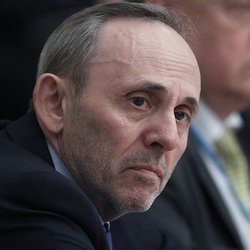‘The economic growth pace can be kept if only a miracle happens’
Ex-economy ministers doubt that Tatarstan will manage to avoid a fall in GRP as a result of the crisis
The International Monetary Fund forecasted a 5,5% fall in the Russian economy in 2020 as a consequence of the coronavirus pandemic, lockout and low oil prices. Though just a month ago, both Russian and Tatarstan authorities discussed how to accelerate Russia’s GDP and Tatarstan’s GRP by up to 5%, now they have faced another task: how to save at least last year’s one per cent growth pace. Realnoe Vremya talked with Russia’s two ex-economy ministers, Yakov Urinson and Andrey Nechayev, who worked during the toughest crises in contemporary Russia — in the 1990s. Both speakers are convinced that Tatarstan alone won’t be able to maintain its GRP at a necessary level. They explained the seemingly “populist” project on distribution of oil money to the population today has one sense today — thanks to this, there is the probability that the economy won’t enter the “red zone”. So the authorities could support businesses too, the experts think.
Discouraging forecasts
The International Monetary Fund (IMF) forecasted a 5,5% fall in the Russian economy in 2020, according to its estimate, the world economy will go down by 3%. Though the fund forecasted Russia’s GDP would grow by 1,9% and that of the world economy by 3,3% as early as January. But, as its analysts noted, “the world has dramatically changed” within three months.
To compare, the World Bank forecasts that Russia’s GDP will decrease by 1% in 2020, while in case of an unfavourable situation, the fall will be 2,2% (consequently, the Russian economy enters the “red zone”).
Head of the Accounting Chamber of Russia Aleksey Kudrin too forecasts negative numbers of economic growth in 2020, he estimated the reduction by up to 5%, as well as head of the Central Bank Elvira Nabiullina (according to her, the growth is “in the negative zone”). However, the collapse of the Russian economy is considered in the IMF not to be as low as in 2009 when Russia’s GDP fell almost by 8%, and GDP in developed countries is significantly higher than in Russia, the fund thinks: by up to 6% in the USA, up to 7% in Germany and France.
Tatarstan and Russia previously planned to accelerate growth pace by up to 5%
It is well known that Tatarstan is a small oil and economic model of the big Russian economy whose pros and cons correlate between each other in any case, if not directly coincide. This is reflected in numbers of economic growth too. So in 2019 (that already can be called pre-crisis and relatively stable) the economic growth in Russia totalled 1,3%, while in Tatarstan it was 1%.
Neither of the numbers satisfied either President of Russia Vladimir Putin, which led to a government reshuffle, or Tatarstan President Rustam Minnikhanov, who tasked the Tatarstan government with achieving the region’s annual economic growth “at least at 5%” in February-March 2020, long before the pandemic hit our country and before the critical fall in oil prices.
Experts and observers named then that the 5% economic growth for a Russian region was an “impossible supertask”, famous economist and blogger Albert Bikbov told Realnoe Vremya about it noting the fact that Tatarstan existed in the tax and legal framework of Russia: “There is no room for manoeuvre, there is only a corridor of opportunities”.
In these conditions, however, on 5 March, Minnikhanov claimed that the task of regional authorities was to provide at least 5 trillion rubles of gross regional product by 2030, while industrial output in Tatarstan in 2019 totalled 1 trillion 844 billion rubles. Yes, 12 years ago, Tatarstan GRP didn’t exceed a trillion. But at the final session of the Tatarstan Ministry of Industry and Trade in March 2020, Vice Premier of Russia Yury Borisov noted that the 1% production growth “made them think”: “The world growth is 3%. We have things to think about here. China has been growing at about 10% for many years. And even now China’s growth pace is forecasted to be over 6%”.
The Tatarstan president reminded them at that moment that during fruitful years the republic’s growth was both 7% and 8% a year. To accelerate gross regional product, according to him, it is necessary “to enter new markets, modernise and support Russian industrial enterprises”. Unsatisfied with the 1% economic growth of Tatarstan, the republic has managed to launch its own 50 programmes at 50 billion rubles apart from national projects since the beginning of the year before the pandemic.
Meeting of three “black swans”
So now the authorities of both Russia and Tatarstan have a task of at least saving previous growth paces or not being in the red. However, economist, first Minister of Economy of the country in the history of contemporary Russia (1992-1993) Andrey Nechayev, doctor of economic sciences, chairman of Civil Initiative party, was sceptical about the likelihood of a positive growth pace both in Tatarstan and Russia in general.

Nechayev cited Nassim Taleb’s Black Swan theory that considers hard-to-predict and rare events that have significant consequences. These events are always unexpected (for experts too), have dire consequences for the economy as well. However, after such events take place, it always seems that their arrival can be rationally explained and it was “expected”.
In ex-Economy Minister Andrey Nechayev’s opinion, not one but three “black swans” at once have met now: the fall in oil prices, which is dramatic for Russia and Tatarstan, the coronavirus and the general recession of the world economy. And in such a situation one can count on positive economic growth only as if it was a miracle. Moreover, during a world recession, first of all, demand and feedstock prices decrease, which are the foundation for our export and economy.
How Tatarstan industry and trade ministry intended to work “Tatarstan wonder” a few weeks to lockout
In late March, literally a few days to the global Russian lockout designed to keep the coronavirus from spreading, Tatarstan adopted a scenario-based development programme of the oil, gas and chemical complex through 2025. According to the document, production in the oil, gas and chemical complex of the republic in the next five years is to increase by 29%, the expected average annual production growth pace is to be 105%, which is obviously ought to pull the non-oil economy to that 5% growth pace.
Authors of the programme — the same Tatarstan Ministry of Industry and Trade and Tatneftekhiminvest-holding — considered weak diversification of product line in big enterprises and underdevelopment of strategic programmes as obstacles to the achievement of big goals. At the same time, Tatarstan adopted the new development programme of oil, gas and chemical sectors “not having reached indicators of the fourth”: in 2015-2018, production volumes in the complex rose by 8% instead of 23%. However, in this case, not only the Tatarstan petrochemical sector was guilty observers and economists noted. And the named problems were a part of problems of all Russian petrochemistry and the world market, which has begun to enter recession since early 2020: falling demand and income of the population, a fall in production output.
It is noteworthy that in this sense for economic growth the programme offered two ways: “Tatarstan wonder” (sudden growth of investments in the Tatarstan oil, gas and chemical complex, development of the republic’s new areas in the chemical industry, creation of innovation clusters) or “conservation” (growth of investments only thanks to projects of operating enterprises, firmer positions in outlets it is present it). Without the growth of investments, the goals wouldn’t have been achieved at all. At the same time, despite the already unfolding pandemic that pressed oil prices at federal level it was said about an intention to save the growth of the Russian economy at least in the first half of the year at a level close to 1%. On 12 March, the Central Bank optimistically claimed that allegedly “revival of consumer demand, growth of budget expenditures, softer monetary and loan terms after decisions made on monetary and loan policy and a favourable situation in the Russian financial market in general will favour” growth in 2020.
Open oil treasure pot and hand money out to population
We already had to forget the unfavourable situation in the financial market several days later. March and April finally mixed the cards and added the pandemic and sudden fall in oil prices due to the conflict of Russia with OPEC countries because of the decision to cut or not to cut oil production to keep a normal barrel rate in world markets to the recession. Catastrophic lockout consequences for small and medium-sized businesses and the population of both Tatarstan and Russia in general complemented the problems of large businesses of the oil, gas and chemical sector. In reply, the federal authorities began to make up a single list of core companies and a list of sectors that have been affected by the pandemic the most, while the Tatarstan authorities tried to support SMEs and large enterprises on the stop almost manually.
Consequently, on 16 April, the list of core companies was refused. In an interview with Realnoe Vremya, ex-Minister of Economy of Russia Yakov Urinson criticised authorities’ attempt at supporting large enterprises and cited the experience of the Russian economy in contemporary Russian, particularly the crisis in 1992, 1998 when the state tried to completely in vain and uselessly support enterprises evaluating which enterprise is liveable and which not. The decision to open the treasure pot of the National Wealth Fund or gold reserves of the country wasn’t made in the end, though it is more often urged both at federal and regional level to spend accumulated oil money to support the population directly. For instance, local communists offered Rustam Minnikhanov on 14 April to allocate some dividends on the state stock of Tatneft share equal to 17 billion rubles to residents of the republic who were affected by the coronavirus pandemic.
Everyone must be handed out 15,000 rubles a month
Despite the seeming “populism” of the idea of handing out money to the population, it is backed by both Russian economy ministers who ruled it during the tough years of contemporary Russia — in the 1990s. So Yakov Urinson, the former economy minister of Russia (in 1997-1998, he witnessed the August crisis), an adviser to the board chairman of RUSNANO PJSC, doctor of economic sciences, professor of the Higher School of Economics, thinks that it is impossible to save positive growth pace even at 1% in one region only. While at Russian level this can be done in one way: to take advantage of huge gold reserves, which are estimated $560 billion, the National Wealth Fund is assessed at 7,5 trillion rubles.

And support small and medium-sized businesses
Ex-Economy Minister of Russia Andrey Nechayev agrees with his colleague and also believes that it won’t become possible to keep the economic growth at least at zero (like 2019 GRP) according to the scenario of “Tatarstan miracle”. It isn’t time for infrastructural projects now, Nechayev thinks, money should better be handed out to the affected population:
“I don’t think that Tatarstan has an ideal budget situation, which is very different from all-Russian. People must be supported, they are in a complicated situation with children, pensioners, the needy. And though the federal budget announced it would give regions 200 billion, it will happen in the future, and the amount isn’t very high. Roughly speaking, it is 2,5 billion rubles on average per region, of course, proportionally to the scale of a regional economy,” Andrey Nechayev noted.